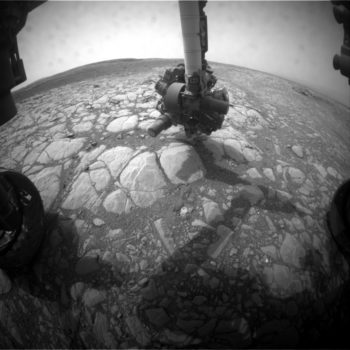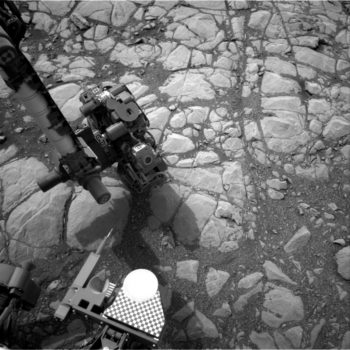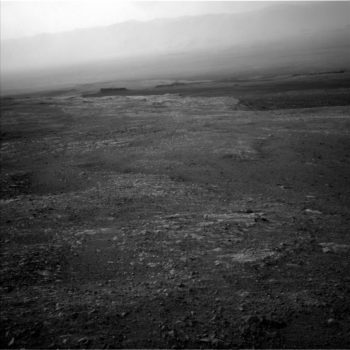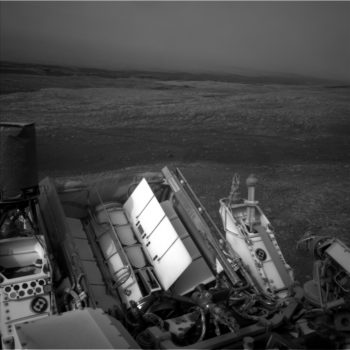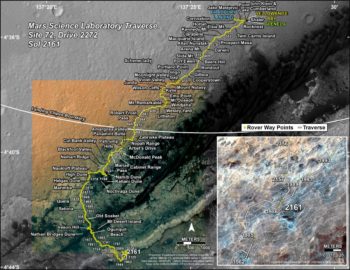NASA’s Curiosity Mars rover is now performing Sol 2162 duties.
Mars researchers have recently been handling gobs of data from Curiosity thanks to extra downlink from two orbiters, reports Dawn Sumner, a planetary geologist from the University of California Davis in Davis, California. “We planned 4 sols due to the Labor Day weekend.”
“Usually, we use the Mars Reconnaissance Orbiter (MRO) and Mars Odyssey (ODY) to transmit our data, and we get an average of 500 megabits of data per sol,” Sumner reports. “Note that 8 bits = 1 byte, so our average bandwidth is about 60 megabytes of data per sol. In contrast, DSL bandwidths are roughly10 megabytes per second, so we get about 6 seconds worth of internet per sol!”
Extra downlink
Mars scientists have been getting lots of extra downlink.
NASA’s InSight mission will land in November, and MRO will be dedicated to relaying InSight data for its prime mission, Sumner adds. Curiosity will shift to downlinking data through NASA’s Mars Atmosphere and Volatile Evolution (MAVEN) orbiter and the European Space Agency’s Trace Gas Orbiter (TGO).
“In preparation, we have been downlinking extra data using MAVEN and TGO. This has allowed us to downlink a backlog of images,” Sumner explains. In a new plan, “we were able to take some large multispectral mosaics to fill an extra roughly 2 gigabits of downlink…an extra 4 sols worth of bits!”
Three sols
The plan called for recharging the rover batteries on sol 2159. That was to be followed over the next three sols by use of Mastcam to take multispectral mosaics of “Tayvallich,” “Rosie,” “Rhinns of Galloway,” and “Ben Haint” plus an image of “Ben Vorlich.”

Part of the calibration target for Curiosity Mars Hand Lens Imager (MAHLI), a photo produced on Sol 2161, September 4, 2018. MAHLI is located on the turret at the end of the rover’s robotic arm. The MAHLI calibration target includes color chips, a metric standardized bar graphic, a penny, and a stair-step pattern for depth calibration.
Credit: NASA/JPL-Caltech/MSSS
The robot’s Chemistry and Camera (ChemCam) was slated to analyze “Ben Vorlich” with the Laser Induced Breakdown Spectroscopy (LIBS) device, and ChemCam, Alpha Particle X-Ray Spectrometer (APXS), and Mars Hand Lens Imager (MAHLI) will analyze “Tayvallich.”
“It’s time to check our instrument calibrations, and APXS will integrate overnight on its calibration target to better constrain dust that settled during the recent dust storm,” Sumner points out. MAHLI was slated to image both the MAHLI and APXS calibration targets on sol 2161. ChemCam then takes its turn for characterizing dust by observing the passive spectrum of the white part of the Mastcam calibration target with a magnet under it, followed by passively observing the sky.
Next drill location
“After all of this imaging, Curiosity will drive toward our next drill location, and we hope to end within 15 meters [nearly 50 feet] of our next drill site. Mastcam will take multispectral images of that area to help us choose the exact spot,” Sumner notes.
Sol 2162 is set to focus on collecting environmental data, including a sky survey and an image of the crater rim to compare dust levels in Gale Crater with those in the atmosphere as a whole. Coming out of the long weekend, planning doesn’t resume again until today, Sumner concludes.
New road map
Meanwhile a new Curiosity traverse map through Sol 2161 has been issued.
The map shows the route driven by NASA’s Mars rover Curiosity through the 2161 Martian day, or sol, of the rover’s mission on Mars (September 04, 2018).
Numbering of the dots along the line indicate the sol number of each drive. North is up. The scale bar is 1 kilometer (~0.62 mile).
From Sol 2157 to Sol 2161, Curiosity had driven a straight line distance of about 102.49 feet (31.24 meters), bringing the rover’s total odometry for the mission to 12.25 miles (19.72 kilometers).
The base image from the map is from the High Resolution Imaging Science Experiment Camera (HiRISE) in NASA’s Mars Reconnaissance Orbiter.
